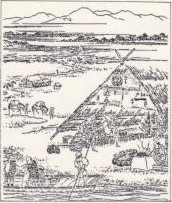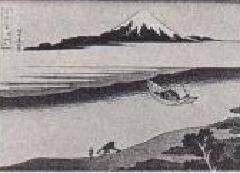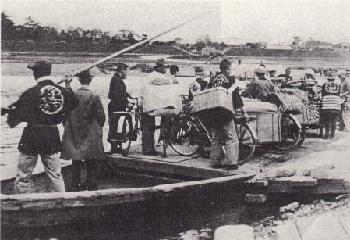
There are 39 rivers in the Tama River basin, from upstream to downstream. W The ferry crossing was a transportation route connecting both sides of the river, and played an important role for the people living in the river basin, transporting people and goods, and moving to farmland. There are four ferry crossings in the Inagi City area. Ferry Terminal was created. Yoshimasa Passing of, Tokugawara The dates of establishment of these ferries, which connect Inagi with Chofu and Fuchu, are currently unclear, but they are thought to have been built between the end of the Middle Ages and early modern times. In particular, the Koremasa and Oshidate ferries are said to have been built during the mid-Edo period. Chofu Tamagawa General Paintings It is also mentioned in the "Yanoguchi Ferry" and was established long ago. After the Tamagawahara Bridge was opened, Shimosu It was merged with the ferry at Suga no Watashi and was renamed Suga no Watashi and continued to operate until 1973. The three ferries at Koremasa, Oshidate and Yanokuchi were permanent ferries, and Tokugawara was used to go to the farmland on the opposite bank. Wataru Sakuba It was.
The usual ferry service was operated by large ships for carriages and carts, and small ships for passengers, bicycles, luggage, etc. Horse-drawn ship And Ofuna They are called "ships" and are 6 to 8 ken (approximately 10.9 to 14.5 meters) long. Small ships are called "ships". large sculling boat They were called "horse boats" and were 5 to 5.5 ken (approximately 9.1 to 10 meters) long. Large horse boats were loaded with 2-ton trucks for transporting agricultural equipment, and the volume of ferry traffic was considerable. Ferry docks in the city were gradually abolished in the 1930s due to the construction of the Koremasa Bridge and Tamagawahara Bridge.

Hino Pass (Edo Meisho Zue)

Crossing the Tama River drawn by Hokusai (from Thirty-six Views of Mount Fuji)

Scenery of the ferry terminal, Maruko ferry (provided by the Ota Ward Folk Museum)










